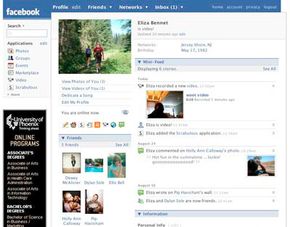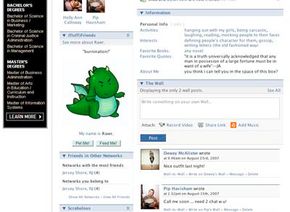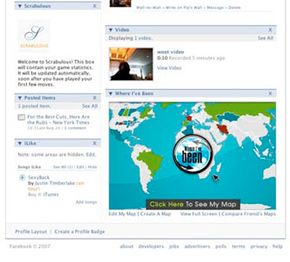In 2004, Mark Zuckerberg, Dustin Moskovitz and Chris Hughes, three Harvard University students, launched a Web site designed to put students in touch with one another, share their photos and meet new people. They called it thefacebook.com, and before long the site became extremely popular on the Harvard campus. A month after the site launched, the creators expanded it to include students from Stanford, Columbia and Yale. By 2005, students in 800 college networks across the United States could join the network, and its membership grew to more than 5 million active users. In August of that year, the site's name changed to Facebook.
Facebook was originally intended for college students, but today anyone can join the network. Although the site's scope has expanded to include more than just students, its purpose remains the same -- giving people a way to share information in an easy and entertaining way. Like MySpace, Facebook is a social networking site.
Advertisement
To explore Facebook, you must create a free account on the site. Facebook's terms of use state that members must be at least 13 years old, and any member between the ages of 13 and 18 must be enrolled in school. Facebook requires new members to provide a valid e-mail address before completing registration. Once you've created an account and answered a few questions about where you work, where you went to school and where you live, Facebook will generate a profile for you.
Facebook provides several ways to find friends:
- You can browse and join networks, which are organized into four categories: regions (networks that are linked to specific cities or countries), colleges, workplaces and high schools. Once you join a network, you can browse through the list of members and search for people you know. You can sort people by age, sex, relationship status, political views and other criteria.
- You can let Facebook pull contacts from a Web-based e-mail account. To do this, you have to give Facebook your e-mail address and password. Facebook uses a program that searches through your e-mail contacts and compares the list against its membership database. Whenever Facebook discovers a match, it gives you the option to add that person as a friend.
- You can use Facebook's search engine to look for a specific person. Type the person's name into the search field, and Facebook will display any profiles that match the name.
In this article, we'll learn about Facebook profiles, applications and how you can access the site using mobile devices like cell phones. See the next page for a closer look at Facebook profiles.
Advertisement






